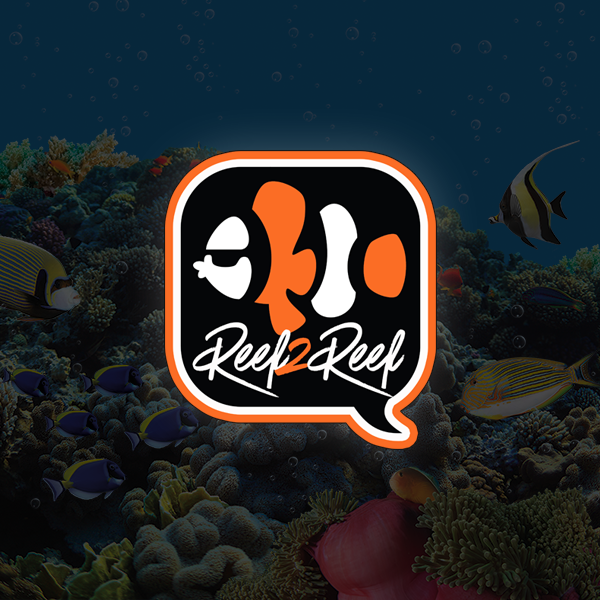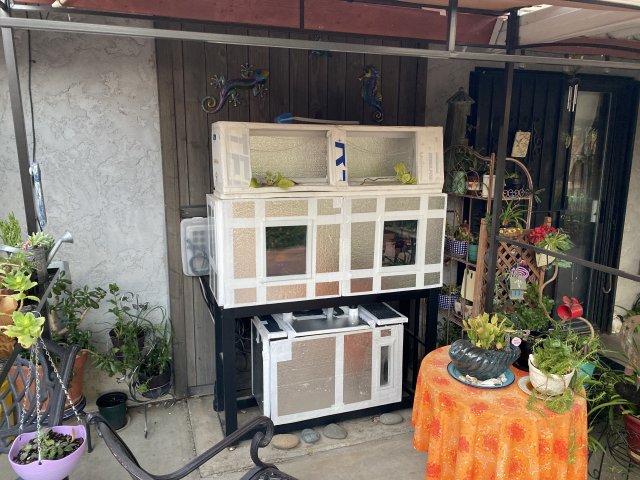I am on a mission to convert my 3 systems over to non-electric heat. I also want to get the pumps out of the water. I've only been shocked once in 45 years of sticking my hands into electrically live aquariums, but I was usually on a dry carpet in dry shoes. Little risk of death.
Now I have bigger tanks on steel stands, and one is out doors. I was actually charging almost 27v through 2 pumps and 2 heaters into that sump water, and of course the indoor and outdoor tanks it services. I am getting concerned that my wife might get a shock, accidently. She's outside watering with a hose, in flipflops, every day.
I have a pump and 3 heaters in my brackish 90g system, plus I don't think the salt helps. I was getting 14~15v leakage from each heater. The potential of the water was almost 47v above neutral and nearly 50v above the local earth. And it's on a steel stand. I'm getting more concerned and I've unplugged all the heaters for now.
The weather is still mild but soon the outdoor tanks will need heat, and after 45+ years I'm finally going to quit putting heaters in the water. It always made me nervous.
I have never liked aquarium heaters. I have lost two small tanks of fish due to "stuck" heaters which cracked and electrified the water, I've had maybe 5 heaters just quit, and I've discarded several just because they were old and suspect looking.
Well, to me they are now all suspect. I feel I've been dodging electrocution for 6 decades as it is. I've stuck my hands into too many tanks that were live. I really want to get all the wiring well away from the water.
Currently, I have two DC pumps that can be plumbed dry and I will likely do so. I have two pond pumps that will need replacement. I have several air pumps not in service, that might be useful. I've never looked into air heating, or hot water loop heating.
I don't know where it will end yet, but this is my next aquarium project.
Now I have bigger tanks on steel stands, and one is out doors. I was actually charging almost 27v through 2 pumps and 2 heaters into that sump water, and of course the indoor and outdoor tanks it services. I am getting concerned that my wife might get a shock, accidently. She's outside watering with a hose, in flipflops, every day.
I have a pump and 3 heaters in my brackish 90g system, plus I don't think the salt helps. I was getting 14~15v leakage from each heater. The potential of the water was almost 47v above neutral and nearly 50v above the local earth. And it's on a steel stand. I'm getting more concerned and I've unplugged all the heaters for now.
The weather is still mild but soon the outdoor tanks will need heat, and after 45+ years I'm finally going to quit putting heaters in the water. It always made me nervous.
I have never liked aquarium heaters. I have lost two small tanks of fish due to "stuck" heaters which cracked and electrified the water, I've had maybe 5 heaters just quit, and I've discarded several just because they were old and suspect looking.
Well, to me they are now all suspect. I feel I've been dodging electrocution for 6 decades as it is. I've stuck my hands into too many tanks that were live. I really want to get all the wiring well away from the water.
Currently, I have two DC pumps that can be plumbed dry and I will likely do so. I have two pond pumps that will need replacement. I have several air pumps not in service, that might be useful. I've never looked into air heating, or hot water loop heating.
I don't know where it will end yet, but this is my next aquarium project.





